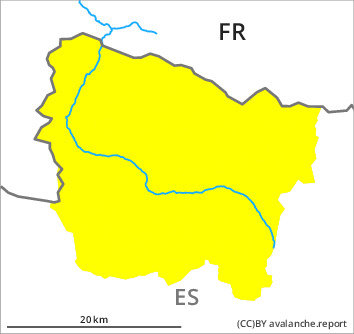
Danger level

Avalanche Problem

Persistent weak layer



Wind slab

2200m


Wind slabs and weakly bonded old snow represent the main danger.
The new snow of last week is lying on soft layers in particular on wind-protected shady slopes above approximately 1800 m. In isolated cases the avalanches in these loacations are medium-sized and in some cases easily released. These can in some cases be released, even by a single winter sport participant.
In addition the mostly small wind slabs of the weekend in particular adjacent to ridgelines on northeast, east and south facing slopes and at high altitudes are capable of being triggered in some cases still.
In addition the mostly small wind slabs of the weekend in particular adjacent to ridgelines on northeast, east and south facing slopes and at high altitudes are capable of being triggered in some cases still.
Snowpack
>
40 to 70 cm of snow, and even more in some localities, has fallen since Wednesday. Over a wide area new snow and wind slabs are lying on old snow containing large grains. Stability tests and whumpfing sounds and the formation of shooting cracks when stepping on the snowpack indicate a sometimes precarious avalanche situation on north, east and southeast facing slopes.
In high Alpine regions snow depths vary greatly, depending on the infuence of the wind. At intermediate and high altitudes there are 60 to 120 cm of snow, and even more in some localities.
In high Alpine regions snow depths vary greatly, depending on the infuence of the wind. At intermediate and high altitudes there are 60 to 120 cm of snow, and even more in some localities.
Tendency
Friday: The danger of dry slab avalanches will persist.